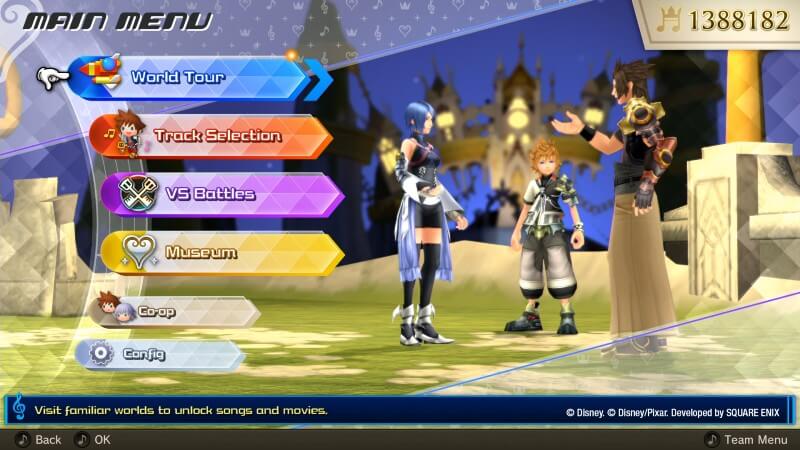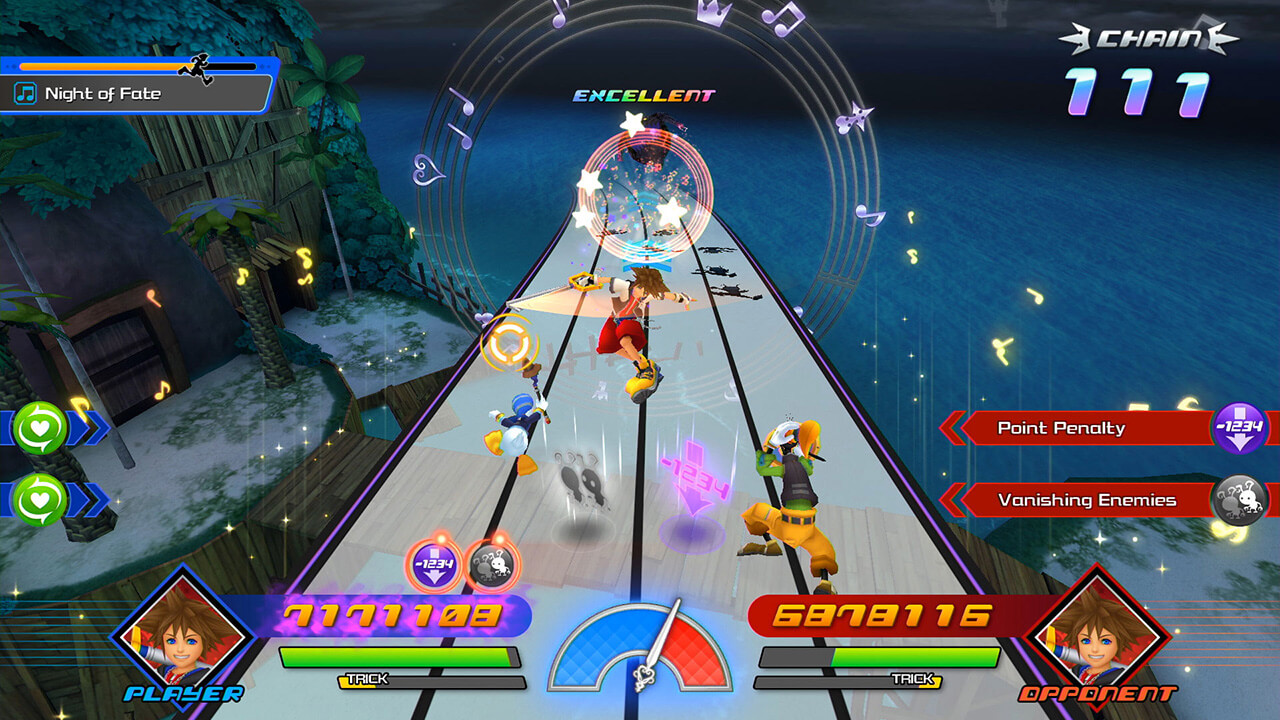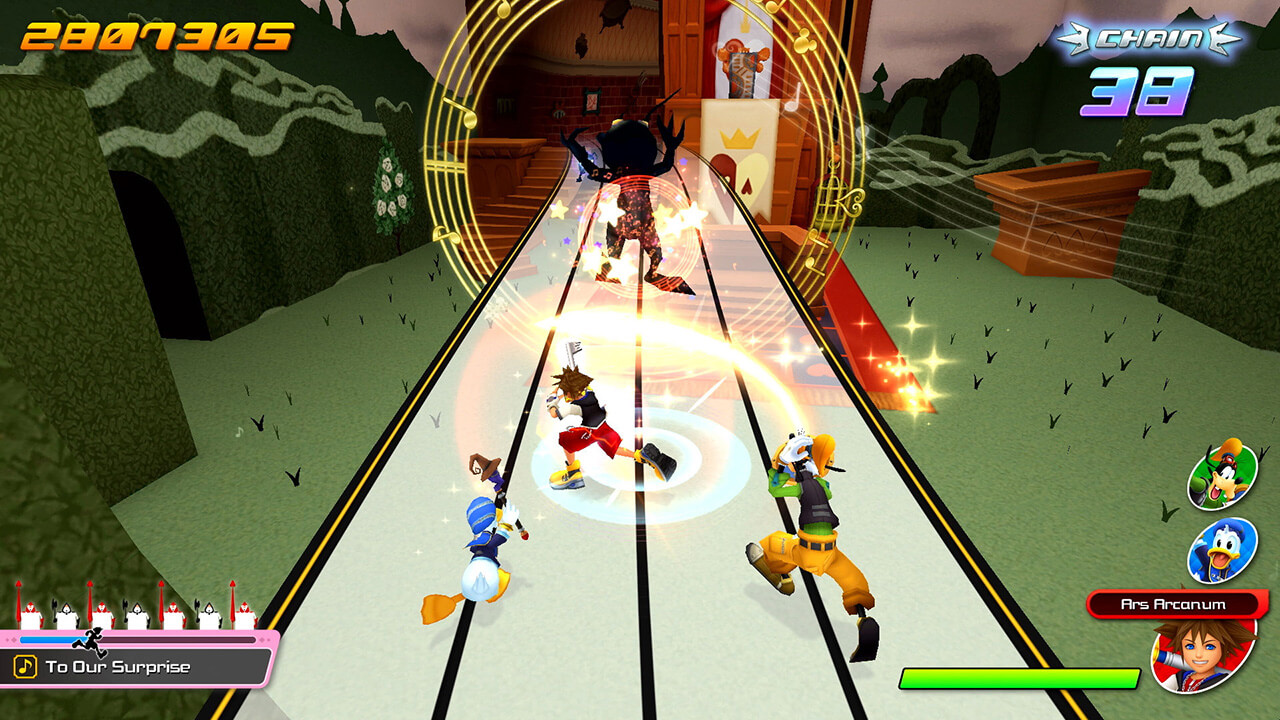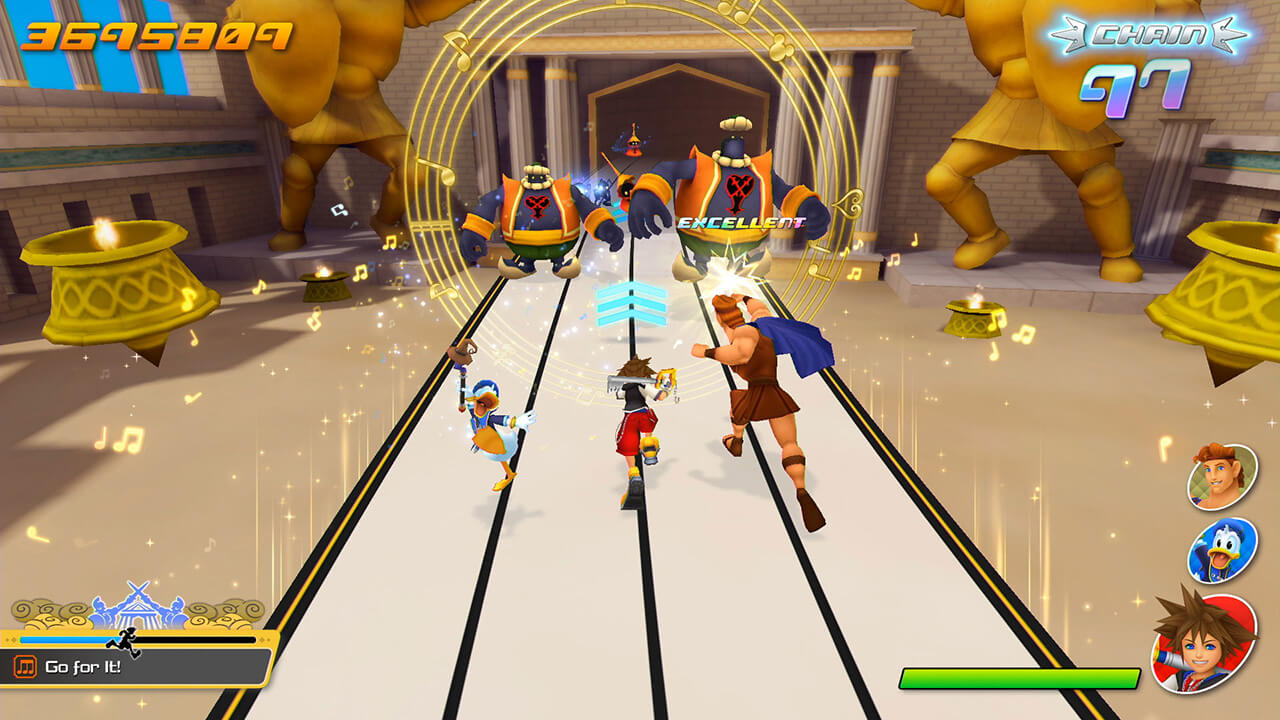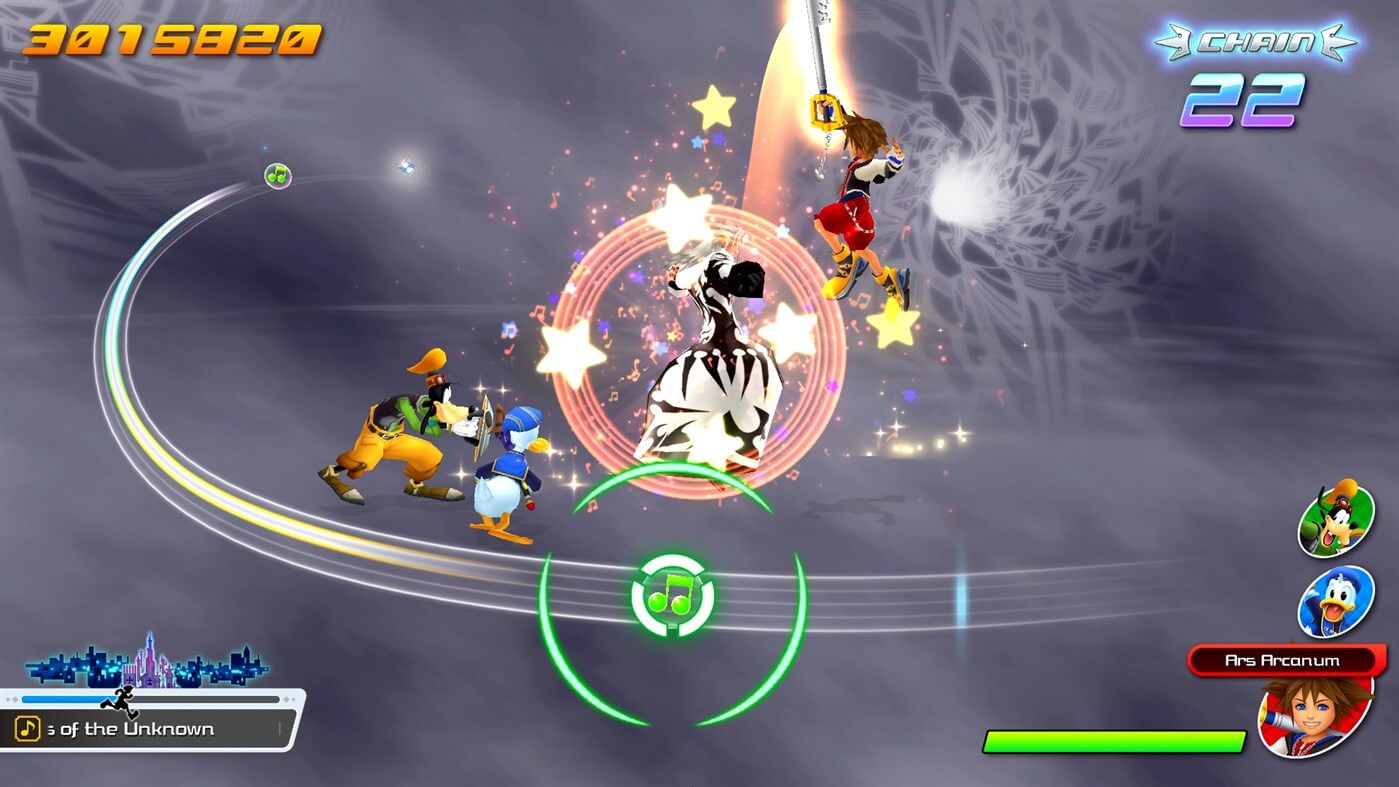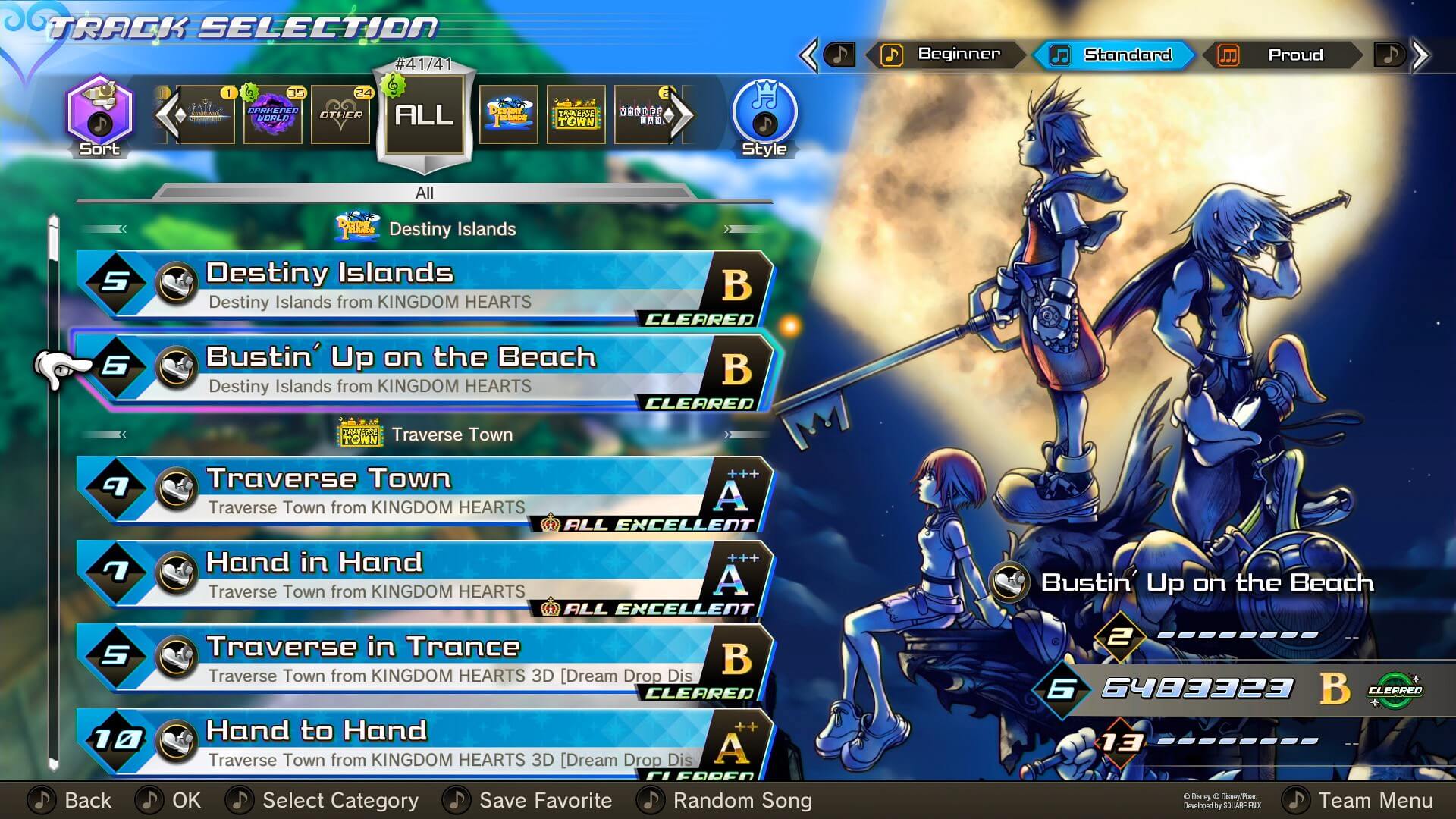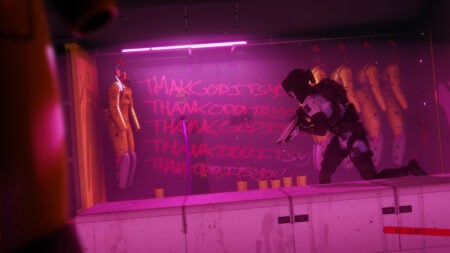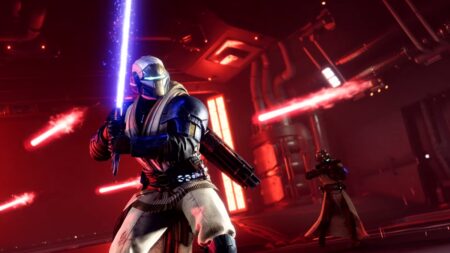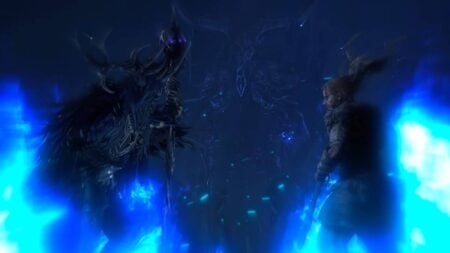Skip To...
Title: Kingdom Hearts: Melody of Memory
Available on: Nintendo Switch,
Developer: Square Enix & Indies Zero
Publisher: Square Enix
Genre: Rhythm, Action
Version Tested: PlayStation 4
Official Site: https://www.kingdomhearts.com
Release Date: November 13th, 2020
Where to Buy: Nintendo E-Shop, PlayStation Store, Xbox Marketplace, Amazon, Game, Square Enix Store, and Local Retailers
Shiro Amano once said, “A scattered dream that’s like a far-off memory… a far-off memory that’s like a scattered dream… I want to line the pieces up… yours and mine.” Kingdom Hearts: Melody of Memory embodies this quote. Kingdom Hearts: Melody of Memory takes place after the events of Kingdom Hearts 3. After Sora’s disappearance in Kingdom Hearts 3, Kairi is tasked with finding Sora due to their strong connection. Ansem the Wise places Kairi into a machine to probe her heart; since Sora and Kairi’s hearts were connected, Kairi is able to visit Sora’s memories of visiting other worlds. In order to progress through Sora’s memories, the player must play through musical tracks to remember the events of each game.
Kingdom Hearts: Melody of Memory allows you to experience the story of Kingdom Hearts without having to put in countless hours grinding experience and exploring the worlds. Although this game saves you time by fast-tracking the story it does so in some inconvenient ways. Below, we will examine the game’s game modes, controls, soundtrack, gameplay, and replayability.
Melody of Memory’s Game Modes
Kingdom Hearts: Melody of Memory gives you the option to pick between four game modes and an art gallery. In order to unlock songs, you must go through the game’s World Tour mode. Once a song has been unlocked, you can replay that song in Track Selection, VS Battles, or Co-op. In Track Selection, you can sort tracks by series, world, stage type, song title, or challenge level; you can also change the style of the song between basic, one button, and performer. Performer adds in additional objects to hit beyond the standard track.
If you feel like working with another player, the Co-op game mode allows you to play through music stages with a friend locally. Those who are feeling competitive can head to Vs Battle. In VS Battle, you must beat the computer at least 2 times before you can play online. Similar to other music battlers, you are given abilities to use against your opponent.
Each game mode provides you with a different way to play each song while providing you with different objectives. Do you want to be a perfectionist, compete against others, or work with a friend? Then Kingdom Hearts: Melody of Memory has you covered, and to great effect.
Itemization & Surviving
Kingdom Hearts: Melody of Memory thankfully gives you a tutorial on how combat works in the game but goes at a rather slow pace. You are tasked with fighting through each musical track with little guidance after completing the tutorial. At the start of each track, the party you have chosen has a limited health pool; this health pool is controlled by the party’s level. As you progress through the world tour, you can unlock three additional parties; if you choose to switch parties, you must level the party up. As you complete each track, your party gains experience.
The party’s health can also be affected by items as well. You can earn items by killing enemies or performing well in each track. Enemies can drop materials that can be synthesized to make new items. Party items can be chosen before the start of each track; however, certain items can be prohibited in specific boss battles or fly tracks. These items can help you survive, level faster, or get more items/components as a reward for completing each track. In addition to crafting support items, you can craft additional songs, artwork, videos, and player icons. This gives you a solid sense of choice before playing each track, as your items can make a serious difference.
Melody of Memory’s Controller Headaches
Kingdom Hearts: Melody of Memory story mode features three types of tracks: Fly, Basic, and Boss tracks that can be played on three difficulties: Beginner, Standard, and Proud. Each track’s mechanics and controls vary depending on the type of track. Basic tracks will have you using normal attacks, jump to attack, glide, dodge, and special attacks. Needless to say, this can become a bit chaotic especially on harder difficulties when trying to remember what buttons you need to push.
The basic track has you use five buttons to normal attack your enemies. You can choose to use either L1, L2, X, R1, or R2 to execute a normal attack. The circle button has your main character’s jump. During a normal track, you must use Circle to jump, dodge attacks, and glide through notes. Finally, the triangle button is used to unleash the special attacks. Sadly, special attacks do not feel all that special. Yes, they may look pretty at first, but all they do is prevent bigger enemies from damaging you significantly.
In basic tracks, you are tasked with hitting all the enemies. Enemies can be separated individually or be in combos. If the enemies are in combination chords, you will get hit for each enemy you miss in the chord. You are judged by how precisely you hit the enemy ranging from miss to excellent. If you miss a target then prepare to take damage. Once a party’s health reaches a certain point, any equipped potions will trigger. If the party’s health reaches zero, you will fail the track.
More Complex Track Mechanics
Some basic tracks feature guest characters that will accompany you throughout the level. On these tracks, special character orbs will appear for you to hit. During my time with these guest characters, I did not notice any special attacks by the guest character for gathering their orbs. Ultimately, this seems like the developer’s attempt to keep things fresh but ultimately fails to prevent the game from getting stale.
Boss tracks work in a similar manner to the basic tracks however you do not have to worry about jumping into dodge attacks. In these fights, you dodge attacks by hitting all the notes in the chain. Boss battles can be difficult due to how you hit the notes. You must hit the notes as they hit the blue line; sadly, the blue attack line can not always be seen easily due to the environment behind it making it difficult to see.
Finally, Fly tracks take you through key moments in each world through a video cinematic. Most of the fly tracks take place in the Kingdom Hearts 3 section of World Tour. These Fly tracks allow you to see everything that happened in that world by playing through one song. These tracks are a combination of the basic and boss tracks mechanics. You are not required to dodge attacks but will have notes that require you to push a specific direction when attacking. The cinematics in Kingdom Hearts: Melody of Memory are pretty but like boss fights, it can be difficult to see certain notes.
Closing Thoughts
Kingdom Hearts: Melody of Memory is a fun trip down memory lane; it is nice to visit from time to time but stay too long and you just feel exhausted. The game features over 140 tracks for you to play between 47 worlds. The game’s soundtrack is enjoyable and makes you remember your first and even second times playing through Kingdom Hearts, but they also feel generic where you’d rather play the Disney songs than the musical backtracks.
Verdict: Kingdom Hearts: Melody of Memory is an okay filler title in between main titles but feels out of date. The game’s rhythm mechanics would have been great during the early 2010s when Rockband and Guitar Hero were still prevalent; however, it does appear rhythm games are making a comeback, EX: Fuser. Ultimately, the game feels like a cash grab based on Kingdom Hearts nostalgia; it does a good job recapping the story but is not as fulfilling as playing through Kingdom Hearts 1.5, 2.5, 2.8, and 3. If you are a diehard fan of the music, then it’s worth picking up; otherwise, you should probably skip it or wait until it’s on sale.
Special Thanks
A review copy of Kingdom Hearts: Melody of Memory was provided by Square Enix.
[review]


